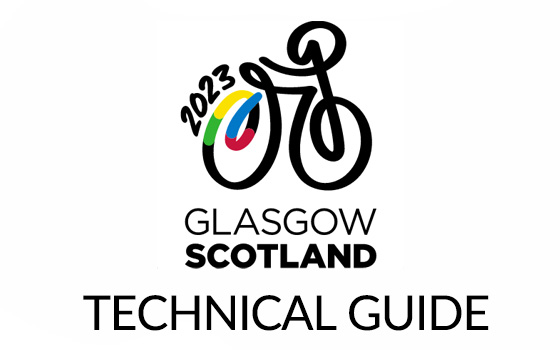Nutrition for Track Cyclists
As an athlete your requirements will be higher than a non athletic or sedentary person. The higher nutritional requirement cannot be met simply by taking in a few extra calories. Therefore you can have the correct calorie intake but still be under-nourished! Just because you are not hungry does not mean that you are nourished.
Proteins are the building blocks of your bodys muscles and tissues. Most athletes need only slightly more protein than non-athletes. You will usually meet your increased requirements through increased food intake. It is unlikely that you'll need protein supplements. If you are involved in aesthetic (e.g. gymnastics), weight restriction (e.g. light weight rowing) or endurance sports (e.g. marathon running), you may have higher protein requirements. Foods like meats, legumes and dairy products are good sources of protein.
There are 25 amino acids (different forms of protein) which are the building blocks of the body. They are essential for growth and repair of body tissue, they are used to make hormones, enzymes, anti-bodies and neuro-transmitters, and help transport substances around the body. Also when glycogen resources have been depleted protein is used as fuel. 9 of these amino acids cannot be made by the body from other amino acids and therefore it is important that a diet contains a source of each of these 9 essential amino acids.
Protein is vital in any diet, however if you consider when an athlete undertakes and strenuous training causing the damaging of tissues or prolonged exercise where there is a depletion of muscle and blood glycogen the body must repair the damage incurred.
The Athletes muscles provide the power to perform, for example provide the power on the pedals to propel the bike forwards. Any compromise in power will lead to a drop in performance.
There can sometimes be a conception that paying attention to the quantity of protein intake is only of importance for power athletes, however protein intake is also imperative for endurance athletes to ensure that they do not compromise their lean muscle mass and as such reduce power or not adapt to training as much they could do if closer attention was paid to the diet.
Protein is also not only about muscle mass but also the regulation and production of hormones that control homeostasis (the bodys natural balance). Insufficient anti-bodies could be produced which can then compromise immune system, then the athlete gets ill!! Therefore the athletes protein requirements are increased by training.
An endurance athlete requires between 1.0 and 1.4g/kg bodyweight of protein (actual protein content not raw weight of food eg chicken) per day. Strength training can increase this to 1.7g/kg. However, as each person is different a general recommendation for aerobic endurance or strength trained athletes to have a protein intake of 1.5-2.0g/kg of bodyweight. Athletes on a vegan diet may need to increase this to beyond 2.0g/kg as the protein sources in a vegan diet are of a lower quality. Many athletes feel that they can achieve the higher protein intake and obtain more of a benefit by breaking down the daily requirement into 4 to 5 meals rather than 3.
Not all sources of dietary protein are equal. Although one gram of protein will contain four calories in all cases, the amount of protein which our body can digest and use for muscle building/repair purposes is not always 100%.
In fact, the most easily digestible natural protein source is whole eggs, where the percentage net utilization by our bodies is 94%. Because eggs contain the best protein digestion rate of any natural source, eggs are given a protein rating of '100' and all other protein containing food sources are rated according to how digestible they are compared to egg protein. Protein sources are therefore ranked according to their Biological value.
The Biological Value (BV) is a scale of measurement used to determine what percentage of a given nutrient source is utilized by the body. The scale is most frequently applied to protein sources, particularly whey protein. Biological Value is derived from providing a measure intake of protein, then determining the nitrogen uptake versus nitrogen excretion. The theoretical highest BV of any food source is 100%. In short - BV refers to how well and how quickly your body can actually use the protein you consume.
Figure 1: BV of dietary protein
Below in figure 2 is a list of the common protein sources used in the preparation of recovery supplements. The biological value of whey protein is far superior to that of soy.
Figure 2: BV of protein supplements
2. Meanwhile mix together ingredients 7,8,9 & 10 in a small mixing bowl and cover with film. Also leave to chill in the refrigerator.
3. Shortly before meal time, heat the griddle pan and brush lightly with olive oil. (If you do not have a griddle pan you a good non stick frying pan), heat to a medium heat. Remove the pork from the marinade (reserving the marinade) and cook the meat for approximately 5 minutes on each side or until the juices run clear from the meat when pressed with a skewer.
4. Whilst the meat is cooking, pour the marinade into a small saucepan and simmer over medium heat for 5 minutes or until slightly thickened. Transfer the pork to a serving dish and pour the sauce over. Sprinkle with the garnish made in 2.
Based on 4 servings, each portion of pork with orange sauce provides
Proteins are the building blocks of your bodys muscles and tissues. Most athletes need only slightly more protein than non-athletes. You will usually meet your increased requirements through increased food intake. It is unlikely that you'll need protein supplements. If you are involved in aesthetic (e.g. gymnastics), weight restriction (e.g. light weight rowing) or endurance sports (e.g. marathon running), you may have higher protein requirements. Foods like meats, legumes and dairy products are good sources of protein.
There are 25 amino acids (different forms of protein) which are the building blocks of the body. They are essential for growth and repair of body tissue, they are used to make hormones, enzymes, anti-bodies and neuro-transmitters, and help transport substances around the body. Also when glycogen resources have been depleted protein is used as fuel. 9 of these amino acids cannot be made by the body from other amino acids and therefore it is important that a diet contains a source of each of these 9 essential amino acids.
Protein is vital in any diet, however if you consider when an athlete undertakes and strenuous training causing the damaging of tissues or prolonged exercise where there is a depletion of muscle and blood glycogen the body must repair the damage incurred.
The Athletes muscles provide the power to perform, for example provide the power on the pedals to propel the bike forwards. Any compromise in power will lead to a drop in performance.
There can sometimes be a conception that paying attention to the quantity of protein intake is only of importance for power athletes, however protein intake is also imperative for endurance athletes to ensure that they do not compromise their lean muscle mass and as such reduce power or not adapt to training as much they could do if closer attention was paid to the diet.
Protein is also not only about muscle mass but also the regulation and production of hormones that control homeostasis (the bodys natural balance). Insufficient anti-bodies could be produced which can then compromise immune system, then the athlete gets ill!! Therefore the athletes protein requirements are increased by training.
An endurance athlete requires between 1.0 and 1.4g/kg bodyweight of protein (actual protein content not raw weight of food eg chicken) per day. Strength training can increase this to 1.7g/kg. However, as each person is different a general recommendation for aerobic endurance or strength trained athletes to have a protein intake of 1.5-2.0g/kg of bodyweight. Athletes on a vegan diet may need to increase this to beyond 2.0g/kg as the protein sources in a vegan diet are of a lower quality. Many athletes feel that they can achieve the higher protein intake and obtain more of a benefit by breaking down the daily requirement into 4 to 5 meals rather than 3.
Not all sources of dietary protein are equal. Although one gram of protein will contain four calories in all cases, the amount of protein which our body can digest and use for muscle building/repair purposes is not always 100%.
In fact, the most easily digestible natural protein source is whole eggs, where the percentage net utilization by our bodies is 94%. Because eggs contain the best protein digestion rate of any natural source, eggs are given a protein rating of '100' and all other protein containing food sources are rated according to how digestible they are compared to egg protein. Protein sources are therefore ranked according to their Biological value.
The Biological Value (BV) is a scale of measurement used to determine what percentage of a given nutrient source is utilized by the body. The scale is most frequently applied to protein sources, particularly whey protein. Biological Value is derived from providing a measure intake of protein, then determining the nitrogen uptake versus nitrogen excretion. The theoretical highest BV of any food source is 100%. In short - BV refers to how well and how quickly your body can actually use the protein you consume.
Figure 1: BV of dietary protein
|
|
|
|
FOOD |
PROTEIN RATING |
|
Eggs (whole) |
100 |
|
Eggs (blacks) |
88 |
|
Chicken / |
79 |
|
Fish |
70 |
|
Lean Beef |
69 |
|
Cow's Milk |
60 |
|
Unpolished Rice |
59 |
|
Brown Rice |
57 |
|
White Rice |
56 |
|
Peanuts |
55 |
|
Peas |
55 |
|
Whole Wheat |
49 |
|
Soy beans |
47 |
|
Whole-grain Wheat |
44 |
|
Peanuts |
43 |
|
Corn |
36 |
|
Dry Beans |
34 |
|
Black Potato |
34 |
Below in figure 2 is a list of the common protein sources used in the preparation of recovery supplements. The biological value of whey protein is far superior to that of soy.
Figure 2: BV of protein supplements
|
Protein Ratings |
|
|
PROTEIN SUPPLEMENT |
PROTEIN RATING |
|
Whey Protein Isolate |
159 |
|
Whey Protein Concentrate |
104 |
|
Casein |
77 |
|
Soy |
74 |
Recipe Suggestion
Griddled Pork with Orange Sauce
Griddled Pork with Orange Sauce
Ingredients
1. 4tbsp freshly squeezed orange juice
2. 4tbsp red wine vinegar
3. 2 garlic cloves, finely chopped
4. Pepper
5. 350g Pork steaks trimmed of all visible fat
6. Olive Oil, for brushing
7. 2tbsp finely chopped parsley
8. Grated rind of 1 lime
9. Grated rind of ½ lemon
10. 1 garlic clove, very finely chopped
1. Mix together orange juice vinegar and garlic (ingredients 1,2,3) in a shallow, non-metallic dish and season with the pepper (4) according to taste. Add the pork (5) and turn to coat. Leave to marinate for up to 3hours in the refrigerator.1. 4tbsp freshly squeezed orange juice
2. 4tbsp red wine vinegar
3. 2 garlic cloves, finely chopped
4. Pepper
5. 350g Pork steaks trimmed of all visible fat
6. Olive Oil, for brushing
7. 2tbsp finely chopped parsley
8. Grated rind of 1 lime
9. Grated rind of ½ lemon
10. 1 garlic clove, very finely chopped
2. Meanwhile mix together ingredients 7,8,9 & 10 in a small mixing bowl and cover with film. Also leave to chill in the refrigerator.
3. Shortly before meal time, heat the griddle pan and brush lightly with olive oil. (If you do not have a griddle pan you a good non stick frying pan), heat to a medium heat. Remove the pork from the marinade (reserving the marinade) and cook the meat for approximately 5 minutes on each side or until the juices run clear from the meat when pressed with a skewer.
4. Whilst the meat is cooking, pour the marinade into a small saucepan and simmer over medium heat for 5 minutes or until slightly thickened. Transfer the pork to a serving dish and pour the sauce over. Sprinkle with the garnish made in 2.
Based on 4 servings, each portion of pork with orange sauce provides
KCalories 204
Protein 26g
Carbohydrate 2g
Sugars 1g
Fat 10g
Saturates 3g
However, serving sizes can be altered according to dietary requirements. We suggest serving this dish with brown rice and a fresh green salad.Protein 26g
Carbohydrate 2g
Sugars 1g
Fat 10g
Saturates 3g





